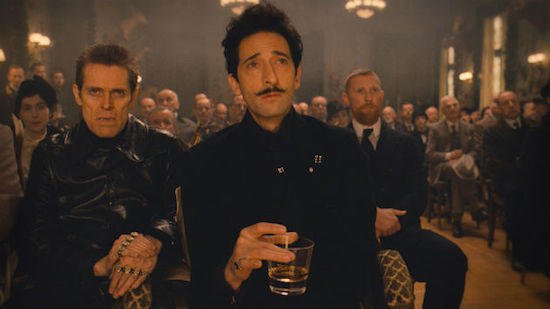
You could watch Wes Anderson's The Grand Budapest Hotel (out now on Blu-ray, DVD and Digital) as a crime caper where hotel concierge M. Gustave H. (brilliantly played by Ralph Fiennes) tries to beat a false charge of murder and encounters a spectacular array of oddball Anderson characters. It's really enjoyable that way, but there’s a lot more going on underneath the surface and the director doesn’t really want you to get the whole point until you’ve had a few days (or weeks or months) to think back on the movie.
%embed1%
The last time Anderson pulled off that trick this successfully was The Royal Tenenbaums. What seemed at the time like an outrageous comic portrait of a high-strung group of relatives has slowly revealed itself as one of the movies’ best meditations on the complications and contradictions built into every family, largely because Gene Hackman gives one of his greatest performances as patriarch Royal Tenenbaum.

The Grand Budapest Hotel features a sprawling cast of first-rate actors, many of whom appear in roles that aren’t much bigger than cameos. Tom Wilkinson plays the (unnamed) writer who publishes the tale of the fall of the Grand Budapest, but Jude Law portrays his younger self for most of the movie. F. Murray Abraham is Zero Moustafa, the wealthy magnate who relates the story of M. Gustave to the Author, but newcomer Tony Revolori plays the role for most of the movie.
Jeff Goldblum, Edward Norton, Tilda Swinton, Adrien Brody, Willem Dafoe and Saoirse Ronan. Harvey Keitel, Mathieu Amalric, Bill Murray, Bob Balaban, Fisher Stevens, Jason Schwartzman and Owen Wilson all make brief appearances as fellow concierges. “Stars after stars,” as they say in the trade.
%embed4%
The Grand Budapest Hotel takes place in four eras: the modern day, where a young girl visits the writer’s grave with a copy of his book, a brief flashback to the ‘80s where Wilkinson makes a TV appearance to promote the book and the the bulk of the film cuts between Jude Law’s visit to the hotel in the ’60s where Abraham tells him the story of what happened to M. Gustave H. back in the ‘30s. In a nice touch, each era gets its own aspect ratio that correlates to the moviemaking from that time.

The movie takes place in the fictional country of Zubrowka, which seems to be somewhere near the intersection of Germany, Poland and Czechoslovakia. The production team managed to find a small city relatively unharmed by World War II, so we get a host of exteriors that capture pre-war Europe.
Anderson is really interested in the European culture that led to World War I and how all the efforts to preserve what was left of that world at the end of the Great War created the conditions that led to World War II. M. Gustave and his hotel and the hotel’s clientele are definite remnants of that era. The rise of a fictionalized Nazi Germany (whose storm troopers used a stylized ZZ logo) is a shadow over the entire plot and leads to the movie’s plot climax. Anderson’s version doesn’t try to stick to the real-life timeline: his version of the Nazis are cracking down in 1932 in ways that the real ones didn’t attempt until much later in the decade.

One of the finest touches in the movie is the spectacular set design of the ‘30s hotel and the post-War modern-style updates that are already falling apart by the time of the late ‘60s scenes. Zubrowka has obviously become a Soviet satellite state after the war and Zero’s fortune has been mostly taken by the state.
%embed3%
What the four-era strategy does is allow Anderson to connect us (in stages) back to the era where Nazis began their European expansion and how remnants of 19th-century culture directly contributed to the coming war. Anderson doesn’t have a grand pronouncement or an explicit warning about how this might relate to our current wars, but the opportunity to make your own comparisons is there.
The movie is incredibly funny and rewards multiple viewings. The melancholy it inspires mostly comes later when you start thinking back about what you saw.
%embed2%
There’s a whole series of special features on the Blu-ray, including a Bill Murray-hosted tour of the town where most of the movie was shot and a good selection of featurettes about the technical tricks employed in the film. There’s also an extensive series of “just proud to be here and work with Wes” testimonials if you’re into that kind of thing. The Blu-ray comes with a Digital UltraViolet copy but without the DVD that’s been the standard add-on for the last few years. Maybe it’s a function of the audience that the studio expects for the film (Inside Llewyn Davis also skipped the DVD this year) or maybe it’s the beginning of a trend.





